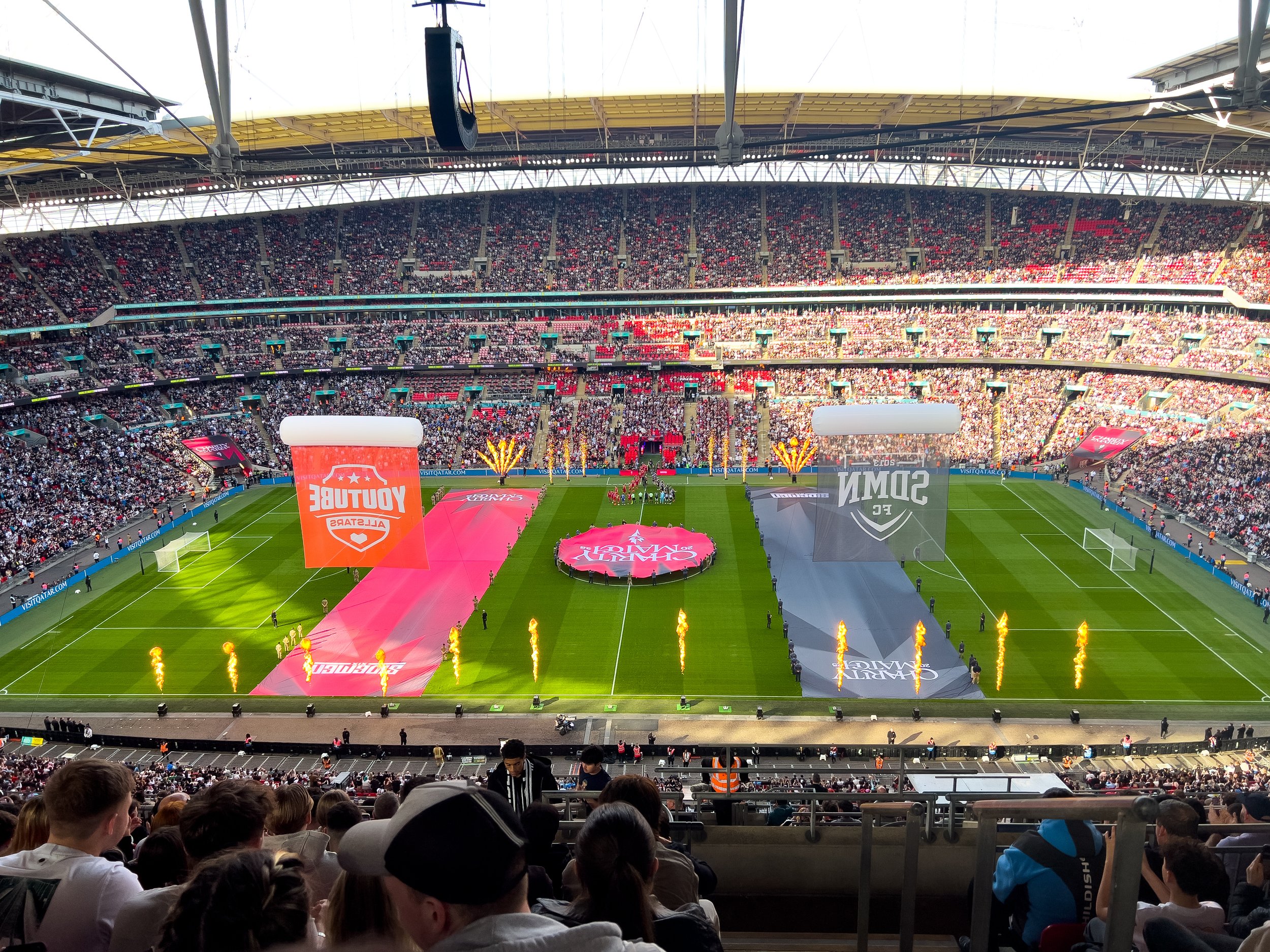The Sidemen Charity Match—everything you missed!
10 March 2025 | Written by Parker Floris
Photography by Parker Floris
90,000 seats sold out at the iconic Wembley Stadium. £4.7 million raised for charity. The crowd was electric, amped with anticipation—the internet breaking in real time.
For years, traditional sports fans and media executives dismissed YouTubers as amateurs, hobbyists—over-hyped entertainers at best, but certainly not capable of pulling Premier League-level demand. Yet, each subsequent Sidemen Charity Match has shattered those perceptions, proving that digital creators aren’t just playing the game—they’re redefining it.
Millions around the world were not just tuning in to watch football, but instead to see their favourite personalities—players whose stories they’ve followed for years, who they’ve watched rise through the ranks of content creation, who they feel personally connected to. The players weren’t just athletes; they were characters in an unfolding drama, and the audience was emotionally invested in every arc.
From Josh finally scoring for the first time in nine years, to Speed’s inevitable chaos, to Theo Baker going from injured to hat-trick scorer in sequential Charity Matches—they understood something traditional sports leagues struggle with: people don’t just watch for the sport. They watch for the story.
Mainstream sports are built on legacy institutions—clubs with century-old histories, leagues that operate as closed ecosystems, broadcasters that dictate coverage. The Sidemen’s (biggest YouTube group in the world and host of the Charity Match) approach is fundamentally different. It’s decentralised, personality-driven, and responsive to what audiences actually care about. This is sports entertainment, but reimagined through the lens of digital culture.
And what’s more, it’s a model that was so foreign to traditional sports organisations. As a result of successes like these, they have since invested in their own content teams, and learned to adapt.
Further, as Gen Z athletes rise through the ranks, they’re naturally building their own brands, like Olivia Dunne (college gymnastics), Deestroying (American Football) and Bianca Bustamante (Formula driving). This is especially true with the rise of NIL (Name, Image, Likeness) deals within US college sports after numerous courts ruled against the NCAA for barring them. Broadcasters have production budgets, but they don’t have the organic, meme-fuelled marketing power that platforms like YouTube, TikTok and Twitch provide.
The Sidemen have tapped into something deeper—a shift where audiences don’t just want to support a team, they want to support individual players, personalities, and the stories they bring to life. The engagement around this event proves it: people weren’t just watching, they were heavily invested.
With every year, the Charity Match grows bigger, and more embedded in mainstream sports culture. The question isn’t whether this was a one-off anomaly. The question is: is this the future of sports entertainment? Where individual personalities matter more than clubs, and where the most exciting games aren’t played in the Premier League—but on a YouTube stream?
What you just read, in your inbox—every Tuesday!
Join industry leaders, creators and curious minds around the world.
Subscribe for free to explore how new media is reshaping society and culture—what it means for our future, and how we can get ahead!








